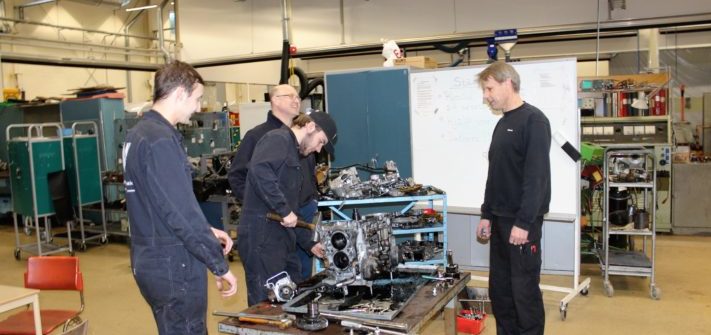News
-
Stay in touch
-
About us
We at Amledo & Co specialize in project development, human resource, research, evaluation, marketing and communications with focus on European projects.
We at Amledo & Co specialize in project development, human resource, research, evaluation, marketing and communications with focus on European projects.

Visualization methods for overcoming language barriers in vocational training
Language usually plays an important part in intercultural communication and is often the first threshold met in intercultural contact. Learners who don’t speak the same language have considerable difficulties communicating. However, communication is much more than just language.
Image material, models and labelling
Refer to methods for overcoming language barriers through the use of visualization, applying proven examples of how to produce image material, models and labelling of relevant objects such as tools, which can be used in the education and training of immigrants who have limited skills in the language spoken in the host country, for example:
Success factors
Good to know
Arabic is read from right to left. Explain from which direction the instructions should be read. European language is read from left to right. It is therefore good to use digits (numbers) to indicate machine operating sequences in all images.
Body language is also a visualization method
Use your body to indicate tasks – you can demonstrate verbs visually, such as screw, hammer, cut, lift, wash, clean, stop, go etc.
Visualising in combination with speaking
Pictorial instructions for machines can be used as back up prompts for oral instructions. Speak slowly and clearly, but not so that the learner feels patronized or degraded. Speaking clearly does not mean speaking very loudly, but simply to emphasize every word. Be clear and use simple words and say what needs to be said. Do not elaborate unnecessarily – too much talk can confuse the message. In teaching, you should just say what should be said like what, how, when, why and how long the training task takes.
How to communicate learning goals by visualising in combination with speaking
Briefly explain what the learner will learn during education and training. Explain what they should learn at each stage/section/lesson and what the learner should learn during the day e.g. in a morning meeting. Repeat professional trade terms and encourage learners to interpret them for each other. Review the subject terms that will be used during the day with words and images. Use short and concise instruction in a single language when the group is ready and advanced enough. Make allowances for mistakes by both yourself and others. You can gradually increase the requirements when the learner is ready.
Good to know
Avoid animal associations if the learners come from an Arab culture. Associations to dogs, pigs and animals overall, can be considered offensive.
By Patrick Ärlemalm, Amledo & Co AB.
Learn more by reading the handbok for free
Learn more by signing up for the free e-learning course for vocational teachers and tutors. ”Relevant learning outcomes and tools for intercultural competence for VET staff and work-based mentors within industries for wood, metal and vehicle”, says by independent Erasmus + evaluator. ”Very interesting”, ”Solid content”, says leading industry experts on competence supply.
Sign in here. Easy and free of charge.
The Enrolment key is VI5o3PyEn8
With support of Erasmus+, 2016-1-SE01-KA202-022082